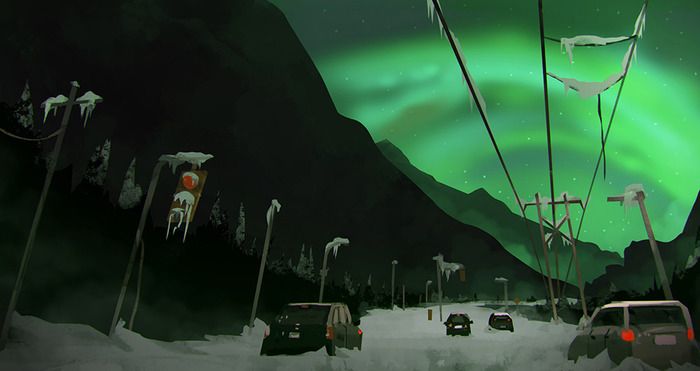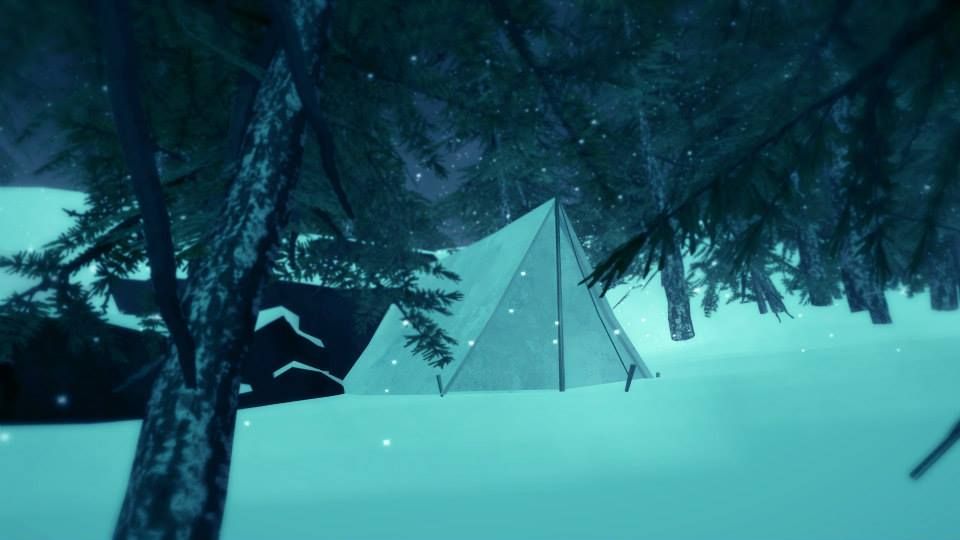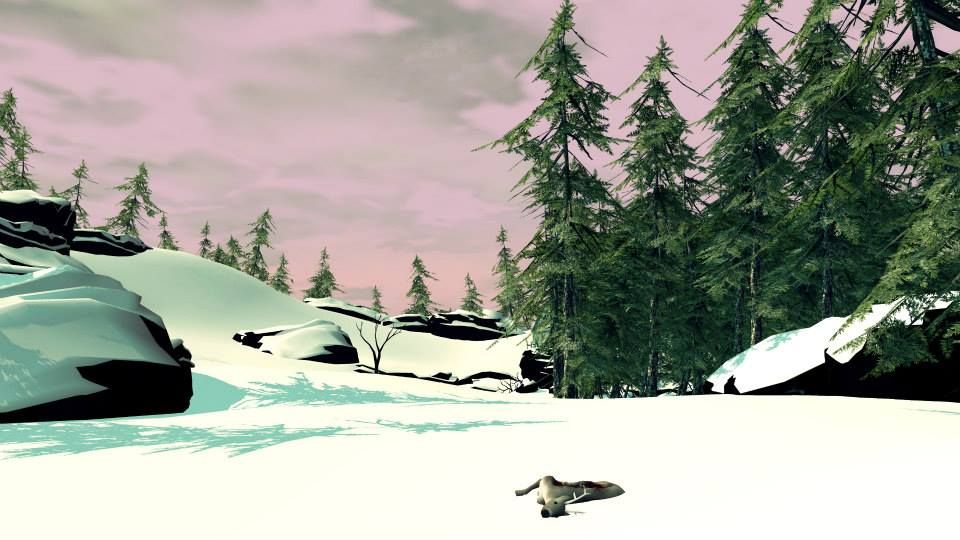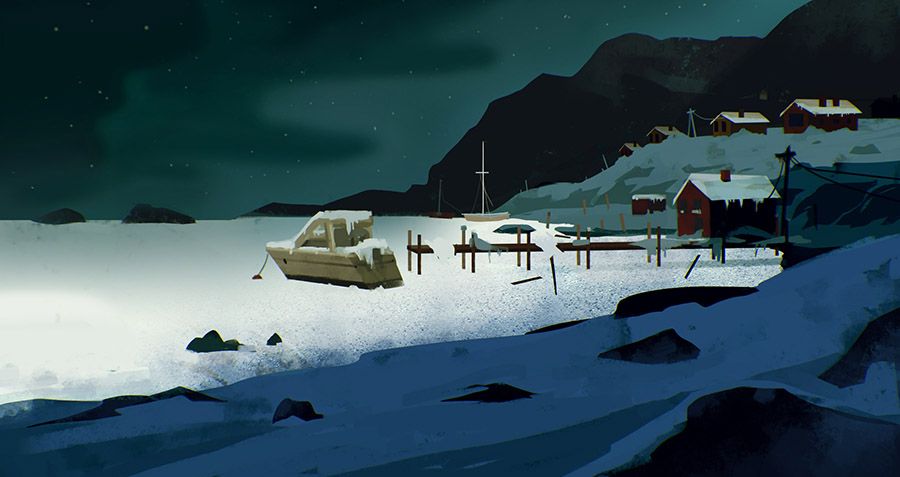If you follow games that are being crowd-funded via Kickstarter, then you have probably come across Hinterland Games and their inaugural title, The Long Dark, which utilized the process. The Long Dark tells the story of Will Mackenzie (voiced by Mark Meer), and his struggle to survive in the rural wilderness after the planet is ravaged by the worst solar storm on record (inspired by the Carrington Event of 1859), leaving all modern technology and infrastructure as we know it, inoperable.
The Long Dark is indeed a unique game, characterized by its unique survival-simulation gameplay and highly stylized art and graphics and I was interested in how all of these different pieces came together to form the product currently in development. I was fortunate enough to get in touch with the game's Creative Director, Raphael Van Lierop, a veteran of the video game industry having worked on titles such as Company of Heroes, Far Cry 3, and the Warhammer 40,000 franchise, and asked him about the game's creative and artistic directions.
The Long Dark is being developed for the PC, Mac, and Linux. The developers are shooting for an October 2014 release, and hope to eventually have the game released on PlayStation 4 and Xbox One as well.
David Rodriguez: When I first encountered your game, it reminded me a lot of the 2011 film, The Grey. What exactly inspired The Long Dark's setting, its characters, gameplay, etc.? Why is an episodic approach the best way to tell this story?
Raphael Van Lierop: I think I can see why The Long Dark would evoke The Grey for you. The Grey’s Alaskan wilderness setting definitely has a lot in common with the world of The Long Dark, although I think our world is a bit more inhabited. I’ve always been fascinated by outdoor survival and wilderness adventure literature, and being Canadian and living on Northern Vancouver Island, I think a slightly wilder natural setting is just part of my context, and sort of infiltrated its way into the idea pool for The Long Dark at an early stage.
I’ve also always been really fascinated by the “what if” scenarios in all kinds of post-apocalyptic or post-disaster literature, film, games, etc., and really The Long Dark was an exercise in trying to meld those two loves into one cohesive setting and world. Choosing to tackle creating a survival simulation experience within that setting was partly motivated by wanting to emphasize the physical and mental aspects of extreme survival scenarios, and also an exercise in trying to be different from the other games and IPs. In terms of the story itself -- I think the episodic-TV structure really lends itself to the long-form storytelling we want to do with The Long Dark.
DR: What made Mark Meer perfect for the role of the game’s protagonist, Will Mackenzie?
RVL: I’ve been a fan of Mark’s voice work for a long time, in particular I loved his Commander Shepard in the Mass Effect series. Mark has great range, but I think it was his more understated performance as Shepard that kind of endeared me to him playing Mackenzie. Mark’s able to deliver a strong performance but he also has a kind of “everyman” quality to him which I feel is really important for delivering Mackenzie, since he’s not your typical video game character.
DR: When designing the overall gameplay, what has been your biggest challenge?
RVL: I think the biggest challenge has been -- and will continue to be -- reigning in the tendency to design systems down to the very smallest detail, to try to strengthen the simulation. For example, the design spec for the Firestarting system is over 10 pages long. It’s an important system in the game so it needs quite a bit of depth, but at the same time we have a lot of other things to build so we have to constantly challenge ourselves to push for meaningful depth to the simulation and not just try to model every single aspect of outdoor survival, because it’s easy to over-complicate things.
What makes a simulation interesting can often be different from what we’re accustomed to think about as being “fun” in a traditional sense. For us, the survival sim is about being as authentic as possible to what it would be like to have to survive in this harsh post-disaster setting, but not to the extent that the game becomes an unwieldy mess. I think we’re experienced enough and honest enough about our player experience to be able to find the right balance, but I know it’s going to be something we constantly work on throughout development. This is always the case when you’re creating a new kind of gameplay experience and not just copying something that already exists.
DR: The game’s art direction is arguably akin to that of a graphic novel. What were the determining factors in taking this approach in lieu of photo-realism or another direction?
RVL: It’s always been important to me that the world feel beautiful, not in spite of the grim setting but because of it. Taking a more stylized, more illustrative approach to the art direction allows us to really push aspects of the style to make it much stronger, more iconic, more recognizable. I personally don’t find photo-realism to be a very interesting creative challenge for artists or anyone else. Sure I think it has a place in games, but I don’t think people’s connection to an experience is determined by something as shallow as how “realistic” the characters look, or world looks. Games like Journey illustrate this very effectively.
DR: The Long Dark is strictly a single-player story because multi/co-op modes fall outside of your development scope (as stated in your FAQ); can you elaborate on this? Is this strictly an issue of funding, or does creative vision play a role in this decision as well?
RVL: Creating an online game, and any kind of multiplayer game, introduces a lot of challenges for technology, gameplay, performance, etc. As a small team, we have to be smart about picking our battles. We felt that creating a very strong single-player experience was the best way to put our strongest foot forward for this first installment of The Long Dark IP. If we’re successful, many other things could become possible in the future.
DR: About how long will average run-time of the campaign be?
RVL: We’re aiming for a 5-6 hour single-player Survival Story mode, as well as a Survival Sandbox mode which will have potentially dozens of hours of game time, with a great degree of replayability.
DR: Will there be any extra downloadable content developed for the game in the future?
RVL: It’s definitely possible, and we’d like to. We’ve structured the game content to be highly extensible, both in terms of the episodic nature of the story, the modularity of gameplay systems, and the way the world is built. Also, keep in mind that we’d like to release more Seasons in the future. Currently we’re working on Season One, which is Winter, but we hope to be able to move on to the other seasons and share more of the story of The Long Dark as we see what’s happened to the world in Spring, Summer, etc. That’s always been the plan, and hopefully the fans will like what we’re doing with Winter enough that we can continue building on it with more gameplay, more story, more world, etc.
DR: What would need to happen for the PS4/Xbox One port to become a reality? How confident are you in this happening? Does the gameplay naturally lend itself to consoles?
RVL: Really, like with the Online/Co-Op question, this is just a matter of time and resources. We definitely have the capability to bring the game to PS4/Xbox One, and the gameplay lends itself perfectly to the consoles. But, that all takes time and resources and as a small team we need to focus our energy on getting the PC/Mac/Linux version out the door before we move on to other platforms.
DR: What does Hinterland Games see in its future after The Long Dark has launched and permeated for a while?
RVL: Hopefully The Long Dark will be successful, we’ll continue building on it with more Seasons and other content, and then we’ll move on to other original IP games that try to innovate in gameplay and storytelling, always within original fictional settings that we’ve created ourselves. But that’s down the road -- right now, we have to get this game done and out the door, and make sure it’s something exceptional. That’s what we expect, that’s what our fans expect, and that’s all we’re focused on right now.




